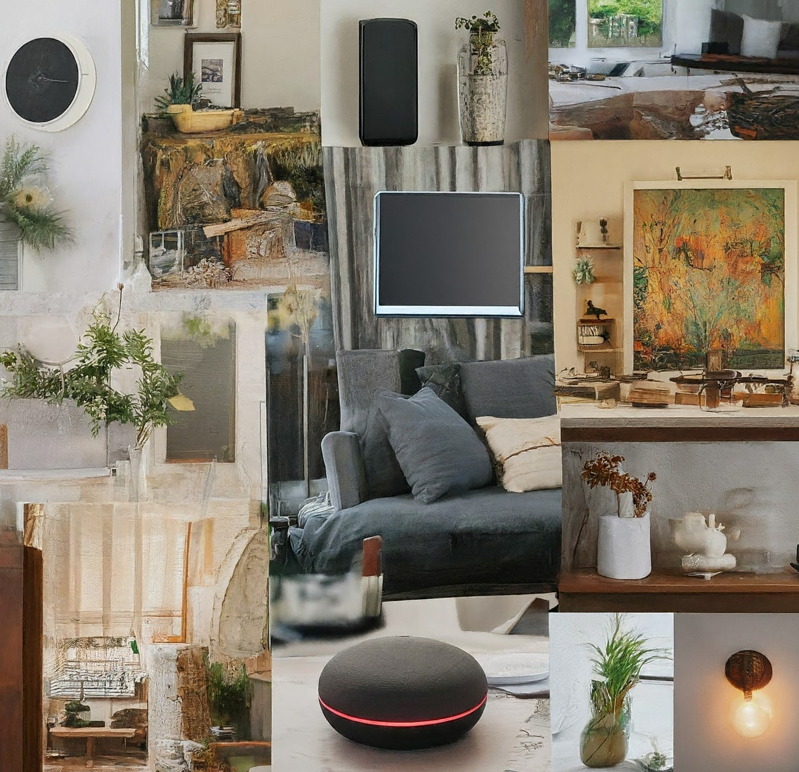
Transform your home into a smart home with the latest and greatest smart devices of 2024. In this comprehensive guide, we explore top-rated smart home gadgets that will enhance your daily life, offering convenience, security, and entertainment.
Smart Speakers: Amazon Echo vs. Google Nest
Smart speakers are the heart of a smart home. They provide hands-free control over your devices, play music, answer questions, and more. Here’s a detailed comparison of two of the most popular models:
- Amazon Echo (4th Gen):
- Features: Integrates seamlessly with Amazon Alexa, supports a wide range of smart home devices, improved sound quality with Dolby processing, Zigbee hub built-in.
- Prices: Typically priced around $99, but often available at a discount during sales.
- User Experiences: Users appreciate its robust integration with other smart home devices and the wide array of Alexa skills.
- Pros:
- Wide compatibility with third-party devices
- Great sound quality
- Useful Alexa skills
- Cons:
- Privacy concerns with always-on microphones
- Requires an Amazon account for full functionality
- Google Nest Audio:
- Features: Integrates with Google Assistant, robust sound quality with a focus on clear vocals and deep bass, seamless integration with Google services and smart home devices.
- Prices: Generally priced around $99, with frequent discounts available.
- User Experiences: Users praise its superior voice recognition and integration with Google services.
- Pros:
- Superior voice recognition
- Excellent integration with Google services
- Appealing design
- Cons:
- Limited third-party device compatibility compared to Alexa
- Requires a Google account for full functionality
Smart Lighting: Philips Hue vs. LIFX
Smart lighting can set the mood, save energy, and be controlled remotely. Here’s how two leading brands compare and tips for installation and best use cases:
- Philips Hue:
- How It Saves Energy: Smart schedules and remote control help reduce energy usage by ensuring lights are only on when needed.
- Installation Tips: Requires a Hue Bridge for full functionality. Start with a starter kit for an easy setup.
- Best Use Cases: Ideal for creating ambiance with customizable colors and scenes; great for living rooms, bedrooms, and entertainment areas.
- Pros:
- Reliable performance
- Broad ecosystem
- Strong app support
- Cons:
- Requires a hub for full functionality
- Higher price point
- LIFX:
- How It Saves Energy: No hub required, easy to integrate into existing setups, and controlled via app or voice.
- Installation Tips: Simple plug-and-play design; just screw in the bulb and connect to Wi-Fi.
- Best Use Cases: Perfect for vibrant, colorful lighting without the need for additional hardware; suitable for any room where you want bright, dynamic lighting.
- Pros:
- Hub-free operation
- Bright and vibrant colors
- Simple installation
- Cons:
- Can be more expensive per bulb
- App can be less intuitive
Security Cameras: Ring vs. Arlo
Home security is a priority for many homeowners. These top security cameras provide peace of mind with advanced features:
- Ring Spotlight Cam:
- Features: 1080p HD video, two-way talk, motion-activated alerts, integrated spotlight and siren, works with Alexa.
- Night Vision: Equipped with infrared night vision.
- Motion Detection: Customizable motion zones for precise alerts.
- Cloud Storage: Subscription required for video storage and advanced features.
- Pros:
- Easy installation
- Comprehensive app
- Effective motion detection
- Cons:
- Subscription required for full functionality
- Privacy concerns
- Arlo Pro 4:
- Features: 2K HDR video, color night vision, integrated spotlight, two-way audio, works with Alexa, Google Assistant, and Apple HomeKit.
- Night Vision: Color night vision provides clear images even in low light.
- Motion Detection: Advanced motion detection with customizable activity zones.
- Cloud Storage: Subscription required for cloud storage and advanced features, but offers local storage option.
- Pros:
- High video quality
- No hub required
- Versatile compatibility
- Cons:
- Higher upfront cost
- Subscription required for cloud storage
Smart Thermostats: Nest vs. Ecobee
Smart thermostats help you save energy and maintain a comfortable home environment. Here’s a look at two leading models:
- Nest Learning Thermostat (3rd Gen):
- Benefits for Energy Efficiency: Learns your schedule and adjusts automatically to save energy when you’re away.
- Key Features: Self-learning capabilities, sleek design, energy-saving features, remote control via app, energy usage reports.
- Compatibility: Works with Alexa and Google Assistant; compatible with most HVAC systems.
- Pros:
- Self-learning capabilities
- Sleek design
- Energy-saving features
- Cons:
- Higher price point
- Limited compatibility with some HVAC systems
- Ecobee SmartThermostat with Voice Control:
- Benefits for Energy Efficiency: Uses occupancy sensors to adjust temperature based on whether you’re home, reducing energy use when you’re away.
- Key Features: Built-in Alexa, remote sensor for enhanced comfort, energy reports, integration with Alexa, Google Assistant, and Apple HomeKit.
- Compatibility: Compatible with most HVAC systems, but setup can be complex.
- Pros:
- Excellent integration with smart home systems
- Additional room sensors improve comfort
- Cons:
- Setup can be complex
- Higher cost with additional sensors
Conclusion: Choosing the right smart home devices can significantly improve your home’s functionality and security. Explore these options on Amazon and Walmart to find the best deals and start your smart home journey today!










